The Senate returned to a snow-covered Capitol Hill this week, while the House is due to return next week. By mid next month, lawmakers must once again act on FY22 appropriations along with a slew of other agenda items for 2022. In addition, federal agencies have unveiled new broadband connectivity efforts, updated equity requirements for educational aid provided last year, and sought to address bus driver shortages plaguing school districts across the nation.
 Congress Returns With Funding Deadline Looming
Congress Returns With Funding Deadline Looming
Earlier this week, the Senate formally reconvened to begin the second session of the 117th Congress. The House is scheduled to follow suit next Monday, January 10. As lawmakers return to Capitol Hill this week and next, they will be confronted with a number of important agenda items, including determining a path forward for Democrats’ domestic spending package, known as the Build Back Better Act (BBBA). However, first among these is the fast-approaching date of February 18, which is when funding for the current 2022 federal fiscal year (FY22) is set to expire. Last year, Congress enacted a short-term extension of FY21 funding levels to keep the federal government open and related federal programs funded. This extension was intended to provide lawmakers additional time to find agreement on a full-year FY22 funding bill, which would last through September 30 of this year. As these efforts get underway, Advance CTE will continue to advocate for the significant funding needs of the Career Technical Education (CTE) community.
FCC Launches New Connectivity Program and Grants New Waiver Flexibilities
On December 31, 2021, the Federal Communications Commission (FCC) officially launched the Affordable Connectivity Program—an initiative authorized by the recently enacted bipartisan infrastructure legislation (known also as the Infrastructure Investment and Jobs Act). The program allots $14.2 billion in supplementary funding for eligible individuals to acquire subsidies for internet service bills and one-time discounts for certain internet capable devices. More on the announcement can be found here.
In addition to these efforts, the FCC also issued an order on Tuesday, responding to seven requests to waive the Emergency Connectivity Fund’s (ECF) $400 cap for the purchasing of connected devices. The $7.2 billion ECF program was authorized as part of the American Rescue Plan and was a key Advance CTE legislative priority to help respond to the “homework gap.” The ECF allows eligible schools and libraries to apply for financial support to purchase connected devices like laptops and tablets, Wi-Fi hotspots, modems, routers, and broadband connectivity to serve unmet needs of students, school staff, and library patrons at home during the ongoing pandemic. This week’s order granted five out of the seven requested waivers capping the allowable cost of these devices.
ED Unveils New Proposed MOEq Requirements
On Monday, the U.S. Department of Education (ED) published updates to requirements for states and local school districts regarding the implementation of “Maintenance of Equity” (MOEq) provisions contained in the American Rescue Plan (ARP). This announcement follows earlier guidance from USED on this topic. Published in the Federal Register, the proposal details a series of new reporting requirements that states and school districts would need to complete by December 31, 2022. The Department is seeking feedback from the public on this proposal and comments are due to the Department by February 2, 2022. Additional information on the announcement can be found here.
School Bus Driver Certification Waivers Announced
Also on Tuesday, ED and the U.S. Department of Transportation (DOT) announced a series of actions to address the nation’s ongoing shortage of school bus drivers. Among these planned responses, ED and USDOT jointly committed to waiving certain requirements from commercial driver’s licenses (CDLs) to reduce the entry requirements to train new bus drivers. The waiver took effect Monday, January 3, and is set to expire March 31 of this year. Bus operators receiving a CDL under this temporary waiver will only be permitted to work within a single state. More information regarding this announcement can be found here.
ED Approves Last Round of State ARP Plans
The American Rescue Plan (ARP), passed last spring, authorized $122 billion in additional pandemic aid funding to be disbursed to K-12 schools over the last year. The U.S. Department of Education (ED) distributed two-thirds of this funding to states via a formula detailed in the legislation during 2021. However, ED held back the remaining third of these funds until states and territories submitted plans detailing how they would make use of these resources to support students as they recover from the impacts of the ongoing COVID-19 pandemic. Over the last few weeks in December, the Department approved the remaining state ARP plans that were awaiting review by ED, including those for Florida, Mississippi, and Vermont. All state ARP plans, including highlights and related press releases, can be found here.
Steve Voytek, Policy Advisor


 Advance CTE welcomes Nithya Govindasamy as a Senior Advisor. Nithya leads and manages major organization-wide, highly visible initiatives that support, promote and increase equitable access to and success in high-quality Career Technical Education (CTE), which includes: workforce development, education and equity initiatives; technical assistance for
Advance CTE welcomes Nithya Govindasamy as a Senior Advisor. Nithya leads and manages major organization-wide, highly visible initiatives that support, promote and increase equitable access to and success in high-quality Career Technical Education (CTE), which includes: workforce development, education and equity initiatives; technical assistance for 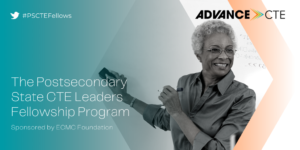
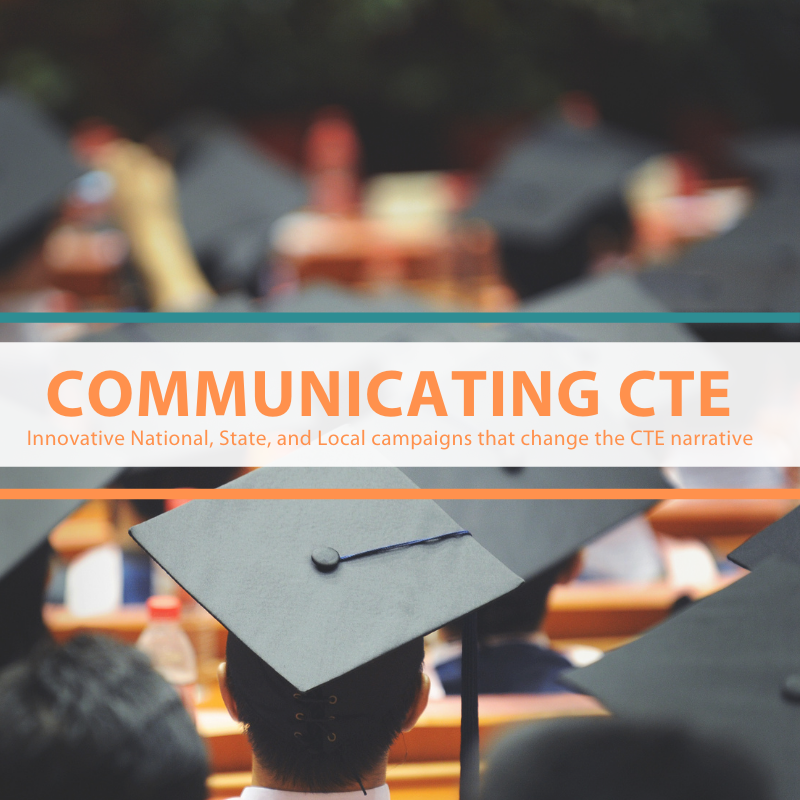 In April 2021, Advance CTE released
In April 2021, Advance CTE released 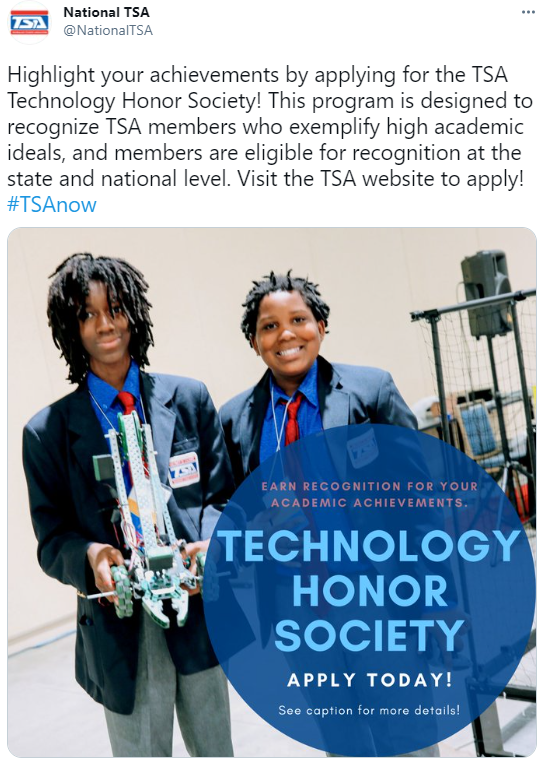 With a focus on recruitment and retention, it is important for learners and families of CTE to see success stories of individuals who look like them and share similar educational, racial, socio-economic, gender and geographic backgrounds.
With a focus on recruitment and retention, it is important for learners and families of CTE to see success stories of individuals who look like them and share similar educational, racial, socio-economic, gender and geographic backgrounds. Families and learners both participating in and considering CTE highly value an education experience that allows learners to explore opportunities after high school that lead to college and career success. In this example, Utah used graphics of learners engaging in real-world skills training to promote its Auto Mechanics and Repairs career pathway. This is a way of demonstrating the connection from CTE courses, work-based learning settings and youth apprenticeship programs to career success.
Families and learners both participating in and considering CTE highly value an education experience that allows learners to explore opportunities after high school that lead to college and career success. In this example, Utah used graphics of learners engaging in real-world skills training to promote its Auto Mechanics and Repairs career pathway. This is a way of demonstrating the connection from CTE courses, work-based learning settings and youth apprenticeship programs to career success.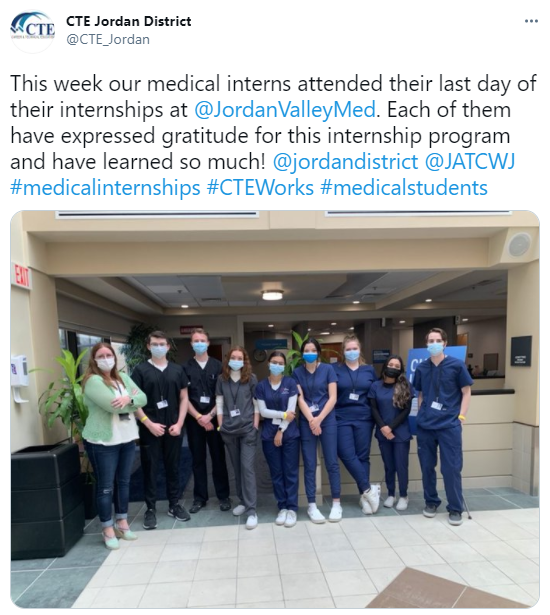 Using local examples can help explain the nuts and bolts of how CTE delivers success by making the connection between CTE and a specific career or industry, as well as highlighting partnerships with local colleges and employers that are recognizable to parents/guardians and learners.
Using local examples can help explain the nuts and bolts of how CTE delivers success by making the connection between CTE and a specific career or industry, as well as highlighting partnerships with local colleges and employers that are recognizable to parents/guardians and learners.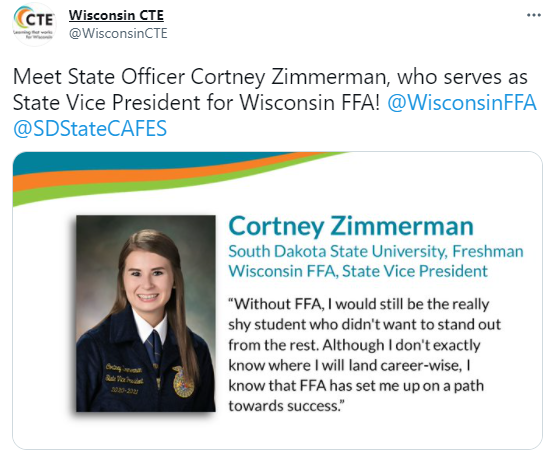 Wisconsin CTE showcased CTE to parents/guardians and learners by lifting up student success stories. One avenue to find compelling learner examples is to coordinate with statewide or local Career Technical Student Organizations (CTSOs) and gather testimonials, photos and stories to share on social media. This tweet focused on a local learner success story to create human interest in CTE. To help expand the reach of this tweet, Wisconsin CTE used relevant hashtags and tagged the state CTSO and the university the learner was attending. This type of post is a great way to highlight CTE and the many ways CTE benefits learners.
Wisconsin CTE showcased CTE to parents/guardians and learners by lifting up student success stories. One avenue to find compelling learner examples is to coordinate with statewide or local Career Technical Student Organizations (CTSOs) and gather testimonials, photos and stories to share on social media. This tweet focused on a local learner success story to create human interest in CTE. To help expand the reach of this tweet, Wisconsin CTE used relevant hashtags and tagged the state CTSO and the university the learner was attending. This type of post is a great way to highlight CTE and the many ways CTE benefits learners. 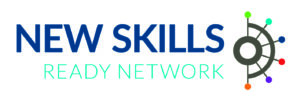 Today, Advance CTE and Education Strategy Group (ESG) released an
Today, Advance CTE and Education Strategy Group (ESG) released an 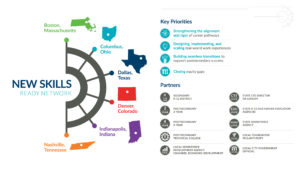
 Additionally, 80 percent of families participating in CTE are satisfied with opportunities to jumpstart their postsecondary education in high school through opportunities to earn college credit and take advanced classes compared to just 60 percent of families not participating in CTE.
Additionally, 80 percent of families participating in CTE are satisfied with opportunities to jumpstart their postsecondary education in high school through opportunities to earn college credit and take advanced classes compared to just 60 percent of families not participating in CTE.
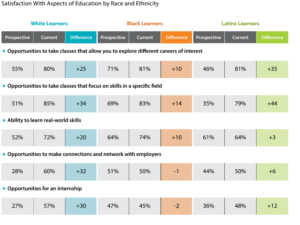

 Cliff – I would say that the particular catalyst for our most recent partnership is our desire as an agency to understand the waitlist demand issues related to
Cliff – I would say that the particular catalyst for our most recent partnership is our desire as an agency to understand the waitlist demand issues related to